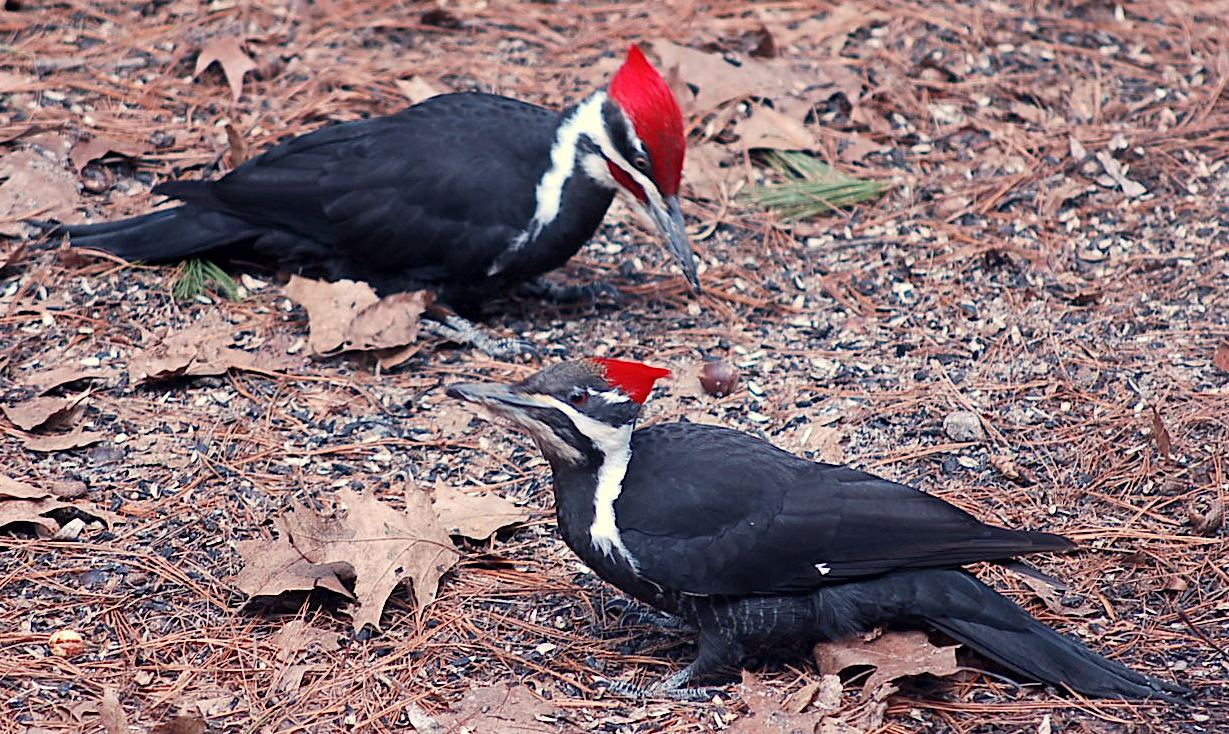Woodpeckers: A Comprehensive Guide to Understanding These Special Birds
Woodpeckers, with their unique behaviors and physical attributes, have long astounded the curiosity of ornithologists and nature fanatics alike. As we discover the complex composition, varied species, and environmental relevance of woodpeckers, a much deeper admiration for these unique birds and the mysteries they hold unfolds.

Woodpeckers' Drumming Habits
Woodpeckers show a rhythmic and accurate drumming behavior that offers various vital functions in their day-to-day lives. This behavior is primarily related to communication, region protection, and foraging. The distinct drumming audio is created by the rapid pecking of their beaks against hard surface areas such as tree trunks, branches, and even steel things.
Communication is an essential element of woodpecker actions, and drumming plays a substantial role in this process. Woodpeckers utilize drumming to develop their presence, draw in companions, and keep call with their partners and spawn. The regularity, strength, and period of drumming series communicate certain messages to other woodpeckers in the location.
Along with communication, woodpeckers utilize drumming actions for area protection. Woodpeckers in Florida. The loud and repetitive drumming functions as an advising to prospective trespassers, indicating that the area is currently asserted. By establishing their region via drumming, woodpeckers lower the probability of problems over valuable sources such as food and nesting websites
Additionally, woodpeckers also use drumming as a foraging strategy. The rhythmic pecking helps them situate insects hiding beneath the bark of trees by developing resonances that interfere with the victim's cover-up. This behavior showcases the versatility and ingenuity of woodpeckers in using their drumming skills for several necessary functions.
Unique Adaptations for Tree Climbing
Having actually mastered the art of drumming to communicate, safeguard territory, and forage, woodpeckers have actually developed one-of-a-kind adaptations that facilitate their remarkable climbing capacities in their arboreal environments. Woodpeckers have zygodactyl feet, with two toes aiming forward and 2 toes aiming in reverse. These tail feathers offer security and equilibrium, enabling woodpeckers to maneuver up tree trunks with accuracy and agility.
In addition, woodpeckers have effective neck muscular tissues and a distinct skull structure that aid in their climbing up capabilities. Their solid neck muscular tissues allow them to rapidly eat tree bark without experiencing whiplash, while their thick head and tiny mind act as shock absorbers, securing them from the impact of repeated drumming. These adjustments jointly make it possible for woodpeckers to browse the vertical world of trees with effectiveness and grace.

Duty of Woodpeckers in Environments
Playing a crucial duty in woodland ecological communities, woodpeckers contribute considerably to the equilibrium and wellness of their environments with their one-of-a-kind actions and interactions with other types. Among the vital environmental features of woodpeckers is their duty in regulating insect populations. By best site foraging for bugs under the bark of trees, woodpeckers aid control bug populaces, protecting against break outs that might damage the overall health and wellness of the forest. In addition, woodpeckers produce dental caries in trees that act as vital nesting websites for a range of various other bird varieties, promoting biodiversity within the community.
Furthermore, the drumming and articulations of woodpeckers play a crucial role in interaction and area establishment. These audios not just serve to bring in companions yet also help define boundaries in between various woodpecker regions, lowering problems and advertising a harmonious coexistence within the woodland community. In general, the visibility of woodpeckers in woodland environments highlights their importance as keystone types, influencing the dynamics and functioning of these habitats in diverse ways.
Composition: Specialized Beaks and Feet
In the complex web of woodland ecosystems, the specialized beaks and feet of woodpeckers are crucial adaptations that allow them to accomplish their critical environmental duties. Woodpeckers possess one-of-a-kind physiological attributes that are specifically made to assist them in their foraging and nesting habits.
The most unique feature of woodpeckers is their solid, chisel-shaped beaks. These beaks are perfectly adjusted for exploration right into wood to reveal bugs, larvae, and sap surprise below the bark of trees. The solid muscular tissues and durable structure of their beaks permit woodpeckers to peck at a rate of approximately 20 times per second without causing damages to their heads.
Additionally, woodpeckers have actually specialized feet that help in their acrobatic climbing up capacities. Their feet have 2 toes aiming ahead and 2 toes aiming in reverse, supplying a solid grip on vertical surface areas (Woodpeckers in Florida). This unique foot setup, together with tight tail feathers that act as a supportive prop, permits check these guys out woodpeckers to hold on to tree trunks and branches easily while they look for food or excavate nesting dental caries
Woodpecker Species Variety
Woodpeckers are a diverse team of birds located across different ecosystems worldwide, with over 200 recognized varieties showing adaptations to various settings. Woodpeckers have advanced to occupy an array of atmospheres, from forests and timberlands to meadows and deserts, each offering special obstacles that have actually affected the evolution of distinctive woodpecker varieties.
One more contributing variable to woodpecker species variety is their specialized feeding actions. Various types have progressed to exploit different food resources, such as insects, tree sap, fruits, and nuts, leading to the development of certain adjustments in beak form, dimension, and stamina. These adaptations allow woodpeckers to forage successfully in their web particular environments, lowering competition amongst varieties and promoting specific niche distinction. Additionally, geographical seclusion and historical factors have actually played a function in forming the distribution and diversity of woodpecker types, causing the wide range of specialized adjustments seen in these remarkable birds.

Verdict
Finally, woodpeckers are remarkable birds that show unique drumming behavior, specialized adaptations for tree climbing, and play vital duties in environments. Their anatomy, including specialized beaks and feet, permits them to grow in their setting. With a varied series of woodpecker types discovered worldwide, these birds are crucial for preserving the health and wellness and equilibrium of forests and woodlands. Recognizing and appreciating the complexities of woodpeckers can supply important insights into the natural world.